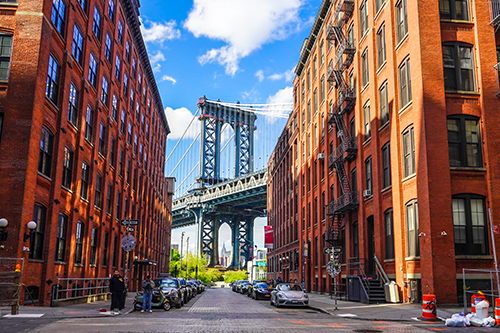
There are many exciting reasons to live in Brooklyn, including its diverse culture, cuisine, and recreational opportunities. To truly appreciate everything would take a lifetime. Creativity, community, and culture define this booming hub.
Brooklyn’s property market continues to exceed expectations, with sales activity resuming just a year after the market paused last year. Not only did the second quarter see the highest number of closed sales on record, up 16 percent from the previous quarter, but contract activity also outperformed the previous year by 32%, beating out every quarter since the 2nd quarter of 2015.
As potential buyers continue to look across the East River for more space, they’re also taking advantage of still-low interest rates to lock in larger homes, resulting in the strongest quarter for sales over $1 million in history. This strong second quarter capped a truly historic first half of 2021, and it appears that Brooklyn’s comeback is here to stay.
Brooklyn is the most populous area in New York City. Over 2.6 million people are spread across several diverse neighborhoods, each with its particular style and flavor, from art centers to parks and beautiful brownstones. Williamsburg, Downtown Brooklyn, Fort Greene, Park Slope, Bushwick, Crown Heights, Clinton Hill, Prospect Heights, Prospect Lefferts Gardens, and DUMBO, among other trendy enclaves, provide quick access to Manhattan. The majority of Brooklyn’s 66 distinct neighborhoods are serviced by various local and express subway lines, buses, and the East River Ferry.
There are numerous attractions and things to do in the city. Start from the iconic Coney Island to the newly built Barclays Center. On weekends, families can watch the Brooklyn Cyclones play at MCU Park, have a picnic in Prospect Park, or visit the Brooklyn Botanic Garden and the Brooklyn Museum to admire masterpieces. Then finish it off with a visit to an outdoor food market to sample a variety of foods.
Gone were the days when being in “the city” meant being in Manhattan. Brooklyn has grown in popularity and is now considered an essential part of the social fabric of New York City. This trend itself has been observed by real estate developers, who are continuing to develop neighborhoods.
Developers are finding it challenging to meet the rising demand for Brooklyn real estate. Restaurants, nightlife, cafes, and boutiques, for example, are relocating to Brooklyn as they can no longer afford to experiment in Manhattan. For those who live in Brooklyn or are contemplating moving to the vibrant city, this adds to the excitement.
